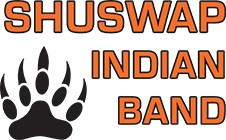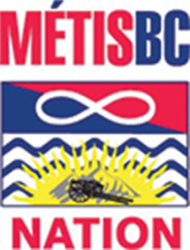Indigenous Peoples
The Ktunaxa people have always been here. Historically, other indigenous peoples also harvested, hunted, fished and settled seasonally within the area, including the Shuswap peoples who for centuries have travelled to and inhabited the Ktunaxa homelands.

The Ktunaxa People
ʔaknuqⱡuk – Golden Area
Before the Ktunaxa, it was the Spirit Animals that occupied the country. Our creation story speaks of the giant, Naⱡmuqȼin, and a prophecy from the Creator that would ultimately create all the Human Beings in the world. At that time there was some disturbance caused by a water monster known as Yawuʔnik̓, who killed many creatures. A war party was formed to destroy Yawuʔnik̓. He was pursued amongst the Kootenay and Columbia River Systems. Yawuʔnik̓ was eventually killed and butchered; his meat distributed among the animals so everyone was fed. His organs were removed and became the various races of people and were scattered throughout the world. The events placed the Ktunaxa people here in our ancestral homelands – as stewards of the land. The lakes and rivers are a testament of this feat as are Yawuʔnik̓’s ribs, known as the Hoodoos, seen throughout the region. When the prophecy was fulfilled, Naⱡmuqȼin, in all his excitement, rose to his feet, standing upright, hitting his head on the ceiling of the sky and knocking himself dead. His feet lay northward in a place we call Ya·kⱡiki, in the Yellowhead Pass vicinity. His head went south and rests near Yellowstone Park in the State of Montana and his body is now known as the Rocky Mountains. For more information on the creation story visit: http://www.ktunaxa.org/who-we-are/creation-story/
Our Ktunaxa language is unique to our homelands, not related to any other in the world. We are very proud of this fact- that we have something so special that is so unique to our territory and our Nation. However, it is not lost on us that our language is critically endangered with less than a dozen fluent speakers in the world. We are working to hold on to our language and teach the young ones to be proud of their language and who they are. Our culture is embedded in our language and teaches us who we are and where we come from through our stories and songs. Much like our word for Golden. In Ktunaxa, our word for the town of Golden is ʔaknuqⱡuk- a word that describes the colour of the water as it runs down into the Columbia. It says it is Muddy or silty making it look White.
The primary game of ʔaknuqⱡuk is elk, moose and deer. You can find all the major food groups: elk, mountain goats, mountain sheep, moose, deer and bear. When the Ktunaxa lived and moved freely throughout their homelands, many Ktunaxa families lived along the upper Columbia River (Miȼ̓qaqas) from its headwaters through and including ʔaknuqⱡuk working the land and harvesting wild vegetation. Hunting trails extend throughout the area and tie in with several portage trails all the way north to Boat Encampment and connect with the trail over Athabasca Pass to Jasper House. These trails also connected to the prairies in Alberta where the Ktunaxa hunted buffalo 2 or 3 times a year. Many of these passes are still known today such as Howse Pass that connects to Jasper House. Another trail branches out and connects to the Selkirk Mountains north of present-day Golden toward Revelstoke (Ktunwakanmituk miȼ̓qaqas). These trails preceded mining settlements and are attributable to the Ktunaxa and latterly by the Kinbasket before becoming the highways you travel by car. The Ktunaxa utilized many resources here in ʔaknuqⱡuk and it was important as a “mustering point” connecting travellers from all directions, much as it still does today. The relief you experience coming out of the mountain pass to meet up with your group, grab a meal or relieve yourself before making the next move were all as important then as it is today.
A captivating story of early Golden from Colleen Palumbo recalls in the early 1900’s Louis Rauch a young man in his 20’s while hunting in the Big Bend Country climbed on top of a bluff hoping to catch better sight of some game, as he adjusted his stance slipped on the snow and fell from the bluff fracturing his leg rendering him immobile. He lay in the snow for a couple of days before his calls for help were heard by a passing group of Ktunaxa on their way back to the Invermere area. The group, realizing they couldn't move him made the decision to leave a family behind with enough provisions to get them through the winter. Because of the kindness of the Ktunaxa the descendants of the Rauch family are here today to share the story with the Ktunaxa families who share in the historic experience.

Secwepemc Shuswap Nations
We are the Secwepemc- the spread-out people. Our relationship of ownership and caretaking of Secwepemcúlecw, our homeland, goes back more than 10,000 years. Our laws and customs were given to us by Sk’elép (Coyote) as laid out in our ancient oral histories. Secwepemc laws govern the Secwepemc Nation building a moral and spiritual foundational of Secwepemc society which is inherently connected to the land and our history.
Albeit that for thousands of years, we have governed ourselves through the application of our own laws. With the “birth” of another nation, Canada, these past 150 years, we’ve had to navigate a world of colonization and the enforcement of an Indian Act. The scope of our governance has been reduced to reservations and elected Chiefs and Councils. However, we are fortunate to have not lost the thread of our laws, our oral histories or knowledge of our lands.
https://www.facebook.com/SecwepemcStrong/
The Shuswap/Secwepemc people lived harmoniously with the seasons and resources throughout the territory, referred to as ‘seasonal rounds’. They developed an intricate system of travel corresponding with the seasons, as well as an important social and political system that governed their interactions with each other and the use of their traditional lands. They entered their “winter homes” (pit house/kekulis) in November and would remain in that location throughout the winter. The pit house was vital for survival in the harshest season when the water froze, and the ground covered in snow, making travel difficult. These permanent homes/villages can be found by archaeological evidence throughout the Columbia Valley and surrounding regions. The salmon that were abundant in the Columbia River system was integral to the Secwepemc culture and identity. Fishing camps could be found along the Columbia River, mouths of Windermere and Columbia Lakes and they would remain there for large harvests of salmon to be divided amongst families, stored and prepared for long winter months and journeys. The way of life in traditional times was planned for and by the community to ensure everyone was cared for and enough resources.
The Shuswap Indian Band (Kenpesq’t) is one of the 17 federal government Indian Bands of the Secwepemc/Shuswap Nation established in the 1860s. Although it is now recognized that pre-contact the Secwepemc Nation had over 32 ‘campfires’ throughout the territory. Previous to 2006, the Shuswap Indian Band was affiliated with the neighbouring Ktunaxa Nation and part of the Ktunaxa Kinbasket Treaty Council. The Shuswap and Ktunaxa people have intermarried for generations and many families are genetically linked. The two Nations have their own unique stories and languages, oral histories and culture.

Metis Nation
Metis Nation Columbia River Society is one of 39 chartered communities of Metis Nation British Columbia serving the Indigenous peoples of Golden and area. Our mission is to promote culture, provide education, and tend to the well-being of our people.
We network with all service providers in our community to better enable us to provide outreach to those in isolation or in need. Our Elders are available to the schools to teach history, language, dance, and culture. We offer workshops in basket making, beading, capote making, food preservation, making balms and lotions, archery, foraging, and many other traditional ways of being and knowing.
Special celebrations are Louis Riel Day/ Metis Week, National Indigenous Peoples Day, and National Day of Truth and Reconciliation and we support our extended community by participating in their Pride Event, Trade fairs, parades, Snow King Festival, and other events.
We are very active in all aspects of teaching and living our culture and are proud to say that our community has come to respect, support, and partner with us on many projects.
Our offices are currently located at 801 10th Ave S., Golden, B.C. and we can be reached at 250-290 0154.
The Metis have played an integral role in developing Golden as a settlement, learn about some family histories here:
.png)
